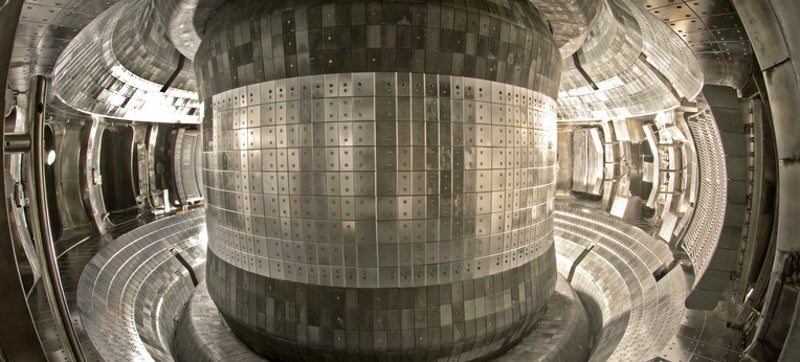
Tests at a fusion reactor in China have hit a major milestone. The experiments have created plasma with a temperature of 90 million degrees Fahrenheit —hotter than the core of our Sun—and sustained the state for over a minute and a half.
The experiments were carried out in the Experimental Advanced Superconducting Tokamak—known as EAST. Its design uses a donut-shaped reactor in which incredibly hot plasma resides. Careful control of intense magnetic fields allows the plasma to be contained in a tight ring running through the center of the donut’s circular cross section—which means that the walls of the structure are never directly exposed to the high temperatures of the plasma.
Ensuring those temperatures can be sustained for long enough is essential to creating energy—the long-term goal of such fusion reactors. We’d need the reactions to run for long periods of time because getting them started requires a huge input of energy: If they stall too soon, the reaction is net negative in energy terms. But controlling such intense heat is difficult, because such high energies causes great instabilities that are hard to confine. So running an experiment at such temperatures for 102 seconds is a positive step indeed.
The news comes on the back of successful tests
It’s not the hottest temperature ever created on Earth. That accolade goes to the scorching conditions created by the LHC, which managed to create a plasma “soup” of sub-atomic gluons and quarks with an estimated temperature of 10 trillion degrees. That’s somewhere in the region of 250,000 times hotter than the center of the Sun. But those conditions last for the merest flicker of time, which is useless for actually creating energy.
Indeed, most scientists suggest that the long-yet-intense burn required for fusion needs to be around 180 million degrees—so we still have some way to go. The consensus seems to suggest that it’ll be a decade or more before one of these rigs is capable of actually producing electricity for us.
But for now, we can celebrate a positive week for fusion science. Let’s hope there are many more.
[South China Morning Post via Tech Insider]
Image: Institute of Plasma Physics Chinese Academy of Sciences